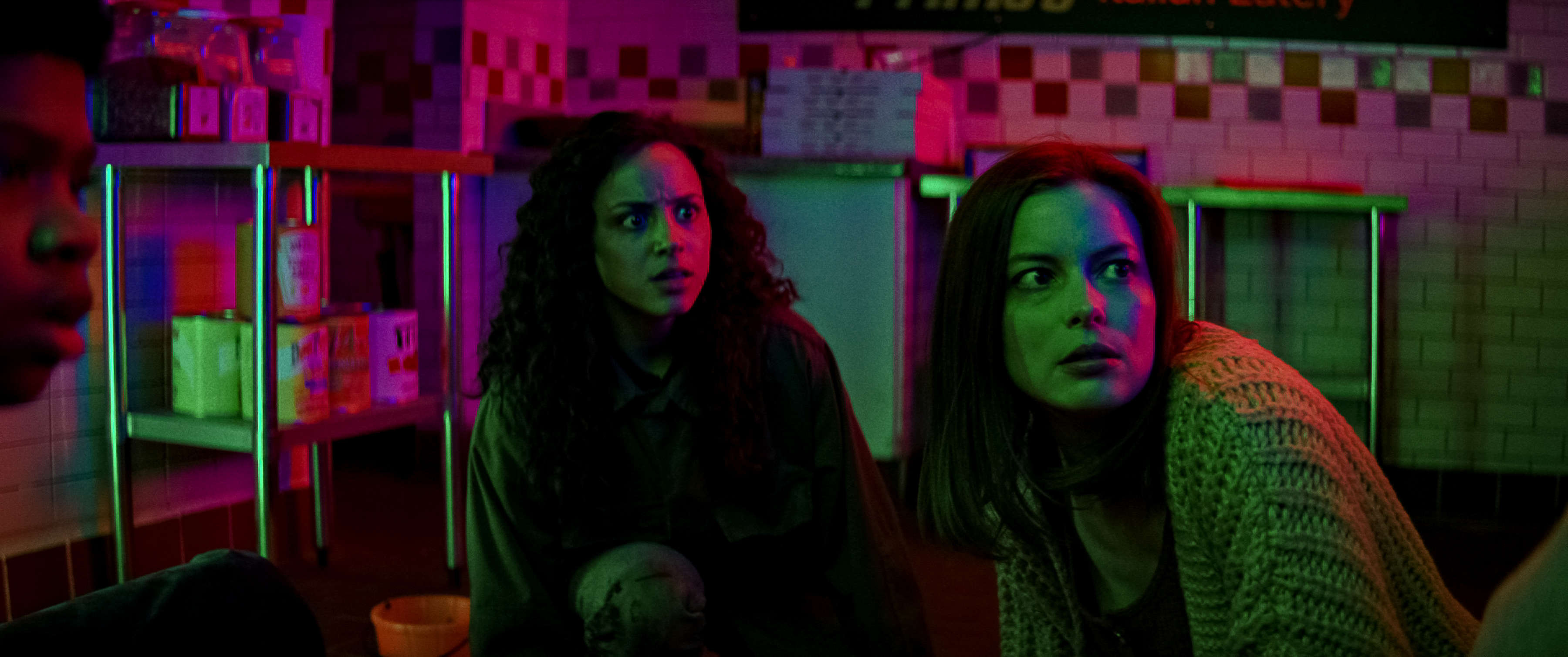Create a free profile to get unlimited access to exclusive videos, sweepstakes, and more!
Comic-Con@Home: Fear Street's R.L. Stine spills gory secrets of his Netflix trilogy

Fear Street struck a rare balance in its three-part Netflix horror trilogy, deftly finding the perfect period vibe for the trio of eras where its bloody good murder mystery unfolded. It also accomplished something perhaps far tougher: successfully bringing the spirit of author R.L. Stine’s written work to life in a way that’s impressed even Stine himself.
Stine and Fear Street director Leigh Janiak got together for a ComicCon@Home online panel discussion of the recent hit films, swapping behind-the-scenes insights on how Netflix made movie magic from Stine’s teen horror fiction series. Joined by moderator Terri Schwartz of Netflix Geeked, alongside cast members Kiana Madeira (Deena), Olivia Scott Welch (Samantha), and Benjamin Flores Jr. (Josh), the gang delved into the fun challenge of adapting Stine’s fiction into a deliciously R-rated movie trilogy that goes beyond your garden-variety slasher fare.
Oh, and they brought a blooper reel — just to show that teenage horror doesn’t have to be all blood and screams.
See? Fear can be fun! Stine said he was amazed at the measure of careful detail that went into bringing his written words to the screen, and especially at the outpouring of love from all those horror-crazed Netflix fans. “I would tell you that the most exciting part of this whole thing has been the reaction of people when they found out there were Fear Street movies,” he said. “You don’t get this kind of reaction from a book — believe me.”
Pretty much everyone agreed with Stine that the opening kill scene from Fear Street Part One: 1994, set against a backdrop of era-appropriate music in an after-hours mall, set the bar high for all the heightened frights that followed. It’s “the closest thing to a Fear Street book,” he said. “The viewer knows that she’s in a lot of trouble — and she doesn’t yet. And that’s what creates a lot of suspense a lot of the time in these books…the viewer knows what’s going on, and she doesn’t, and it makes it all more horrifying.”
Though Netflix spared little expense in assuring that all three movies hit the mark with carefully-detailed recreations of places and spaces from the 1600s, 1970s, and 1990s, the real authenticity behind Fear Street’s success lies deeper, said Janiak, who confessed she devoured Stine’s book series as a kid.
Creating the right tone was a matter of “relying on my memory of the experience of reading them, and what that meant to me,” she explained, adding that she used her own childhood reaction to the books as “kind of the barometer” to inform the overall feel of the screen version. ”Living in an R-rated place was really important to me too, because you’ve gotta have the blood; you’ve gotta have the slasher deaths” to raise the stakes beyond the teen-inspired horror films that audiences are used to, she added.
Repeat Fear Street binging also will reward eagle-eyed fans, Janiak teased. While it’s fun to linger over Colonial-period details you might’ve missed the first time (“The care that was taken — it was amazing,” Stine said of his Atlanta visit to the Fear Street Part Three: 1666 set), Janiak advised paying close attention to catch familiar-looking sequences that turn up in all three movies — sort of a way to establish some motifs that connect the characters and events that span more than four centuries of horror.
“‘We tried to create moments that we saw over and over again that we saw in the three movies,” Janiak hinted, noting the subtle moments where a scene from one film is slyly duplicated in another.
Netflix's adaptation also teased out present-day social dynamics that cast members were eager to embrace. “Shadyside is a town of outsiders; people who have been placed in boxes and been told that they’re gonna get the short end of the stick,” said Madeira. “…Those are the heroes of this trilogy, and the people we are rooting for.”
Flores’ character, Josh, begins the trilogy as a bit of an isolated nerd, but ends up coming into his own as the actors weave through all three films. “He feels more comfortable to stand up and express himself more” by the end, Flores said, highlighting the movies’ message that “you can be anything; you can stand up for anything…and you don’t have to die in the first 20 minutes.”
Leave it to Stine himself to answer that with the perfect Fear Street retort. “But,” he teased, “you do have to die!”
All three movies — Fear Street Part One: 1994, Fear Street Part Two:1978, and Fear Street Part Three: 1666 — are ready for your next popcorn-munching slasher binge now at Netflix.
Click here for SYFY WIRE's full coverage of Comic-Con@Home 2021.


























